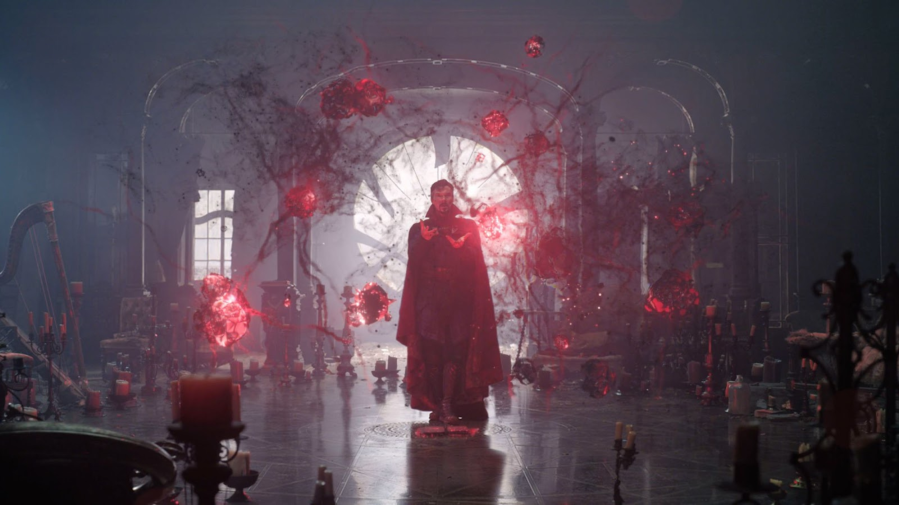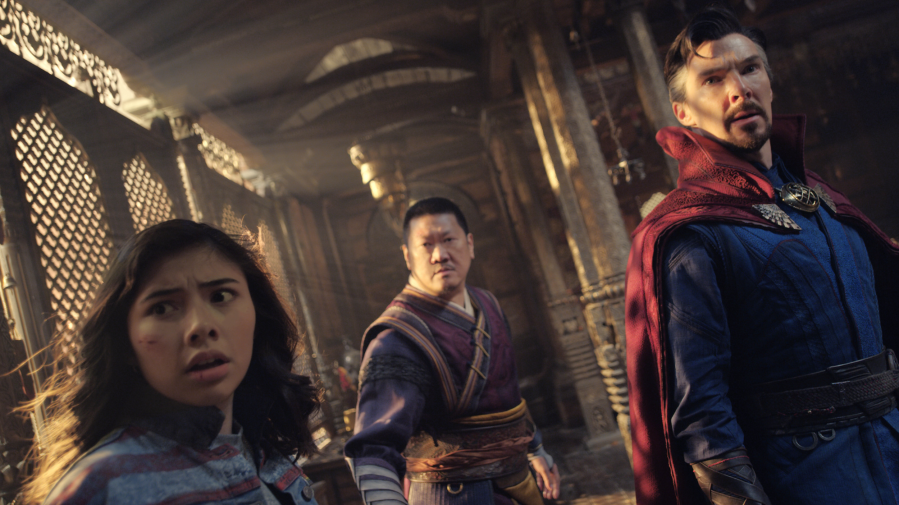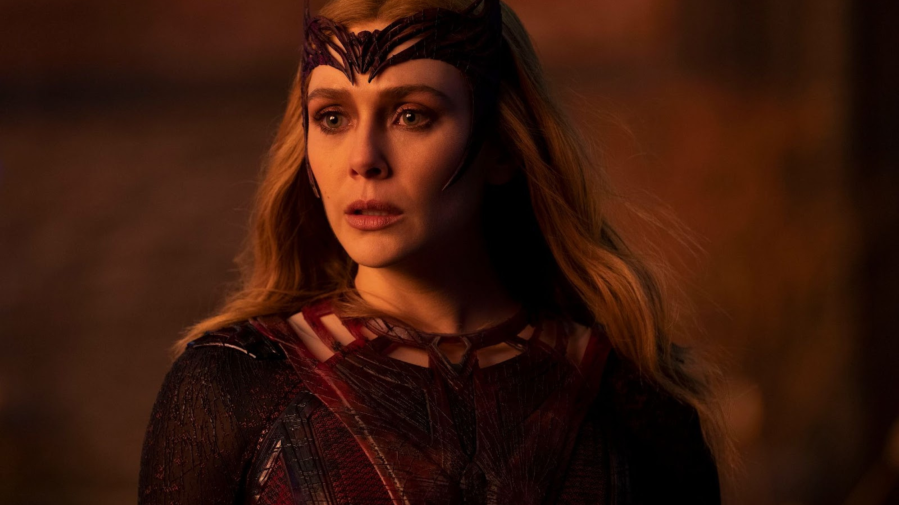
Rating: 5/10
Let’s engage in a little thought experiment; you’re Marvel Comics, you’ve been around since 1939, and you’ve created thousands of characters and concepts over the years. What could you ever possibly do to keep track of all these ideas? Well, you start printing Handbooks and Encyclopedias. My brother and I owned The Marvel Encyclopedia Vol. 1 back in the day, and we were blown away by the sheer size and scope of the Marvel Universe.
As fun as that book was to read, there wasn’t a story to immerse yourself in. Characters like Spider-Man and Wolverine appeared, but they weren’t depicted doing anything new or exciting. I never imagined anyone would try to adapt one of Marvel’s Encyclopedias for the big screen yet, that’s what Doctor Strange in the Multiverse of Madness — which opens exclusively in theaters this Friday, May 6 — feels like, to a large degree. From start to finish, new characters, concepts, and terms are introduced one after the other. So much of the film’s two-hour and six-minute runtime is spent simply explaining things that there’s very little room for the characters, the premise, the set design, or director Sam Raimi’s signature style to truly shine.
I believe Marvel Studios is testing the waters with Phase 4 to see which ideas will sink and which will swim. The Multiverse of Madness feels like an attempt to make a box-office hit that exclusively caters to die-hard fans of the Marvel Cinematic Universe (MCU) — folks who’ve watched every entry in the MCU and every Disney+ show. But this movie may not be particularly accessible to general audiences or fans of character-focused films.
“The Magic Touch”: Reasons to See This Film

Objectivity and creativity rarely go hand-in-hand, but technological advancements have dramatically increased the quality of visual effects used in MCU films over the years. The Multiverse of Madness is visually pleasing, and even includes several sequences that are outright stunning. Anyone who loves movies with trippy, mind-bending effects will likely have a good time. Hats off to the army of VFX artists who brought their A-game to this project.
The costume and set designs for the 28th entry in the MCU are also stellar. This is a film that rapidly bounces between urban cityscapes, mystical locales, and alternate realities — and manages to make it all look believable. The amount of care and detail that went into making this world look and feel authentic is palpable. Fans of immersive fantasy sets and costumes will find lots to love about Doctor Strange 2.
Last but not least, Raimi’s direction is easily this film’s greatest strength. There are several instances where the Multiverse of Madness delves into the horror genre; scare chords, ominous lighting, tense atmosphere — the works. Some of the film’s most memorable scenes are also some of its most frightening and visceral. Fans of the Evil Dead franchise and camp horror flicks as a whole will really appreciate these moments, especially the film’s climax.
“Bad Omens”: Reasons to Avoid It

There’s a lot of telling in the Multiverse of Madness, but not enough showing; characters will exposit about ancient tomes, forbidden spells, their backstories, and their motives for minutes on end, which gives them time to do little else. Writer Michael Waldron (Loki) had the unenviable task of grappling with the MCU’s ever-expanding mythos, and the end result is a movie that prioritizes a dense plot over a compelling story. People who appreciate layered, fleshed-out characters might want to steer clear of this movie.
Fanservice, honestly the sheer overabundance of it, is another weak point for the Multiverse of Madness. Normally, it’s fun to count all the winks and nods to the comics and the other stories in the MCU. Here, you’ll be lost if you haven’t watched Loki, WandaVision, and I’ll even toss in The Falcon and The Winter Soldier just to be safe. It’s honestly hard for me to recommend this film if you haven’t kept up with every last show and film that Marvel Studios has put out since Avengers: Endgame (2019).
Doctor Strange (2016) is actually one of my favorite films in the MCU. No doubt, the visuals are dazzling and Michael Giacchino’s score is enchanting, but Stephen Strange’s (Benedict Cumberbatch) story really resonated with me. That first film was all about humility; watching him go from a pompous surgeon who had everything, to a broken man who had nothing, to a hero who was willing to get killed over and over again (i.e. the “Dormammu, I’ve come to bargain” scene) was engrossing. Sadly, Doctor Strange feels superfluous in the Multiverse of Madness. He has an arc in this film, but it doesn’t really go anywhere. He’s sidelined so that characters can tell you more about this book or that reality, and it’s a disservice to the character and Benedict Cumberbatch. Thematically and narratively, I don’t see this film as an effective follow-up to Doctor Strange.
The Takeaway
In hindsight, each Phase of the MCU prioritized a specific audience over the others. Phases 1 and 2 were largely geared toward general audiences and were less concerned with critical acclaim or absolute faithfulness to the comics. Phase 3 sought to address the MCU’s “villain problem” and appease the critics, hence characters like Erik Killmonger (Michael B. Jordan), Baron Zemo (Daniel Brühl), Ego (Kurt Russell), Hela (Cate Blanchett), and, of course, Thanos (Josh Brolin).
Phase 4 is something of a mixed bag; Shang-Chi (2021) is probably the most accessible film they’ve made so far, while Spider-Man: No Way Home (2021) is connected to at least seven other Spider-Man films. If Doctor Strange in the Multiverse of Madness is any indication, Marvel Studios might be willing to prioritize its dyed-in-the-wool fans and leave everyone else by the wayside.

 Caleb Bailey
Caleb Bailey




